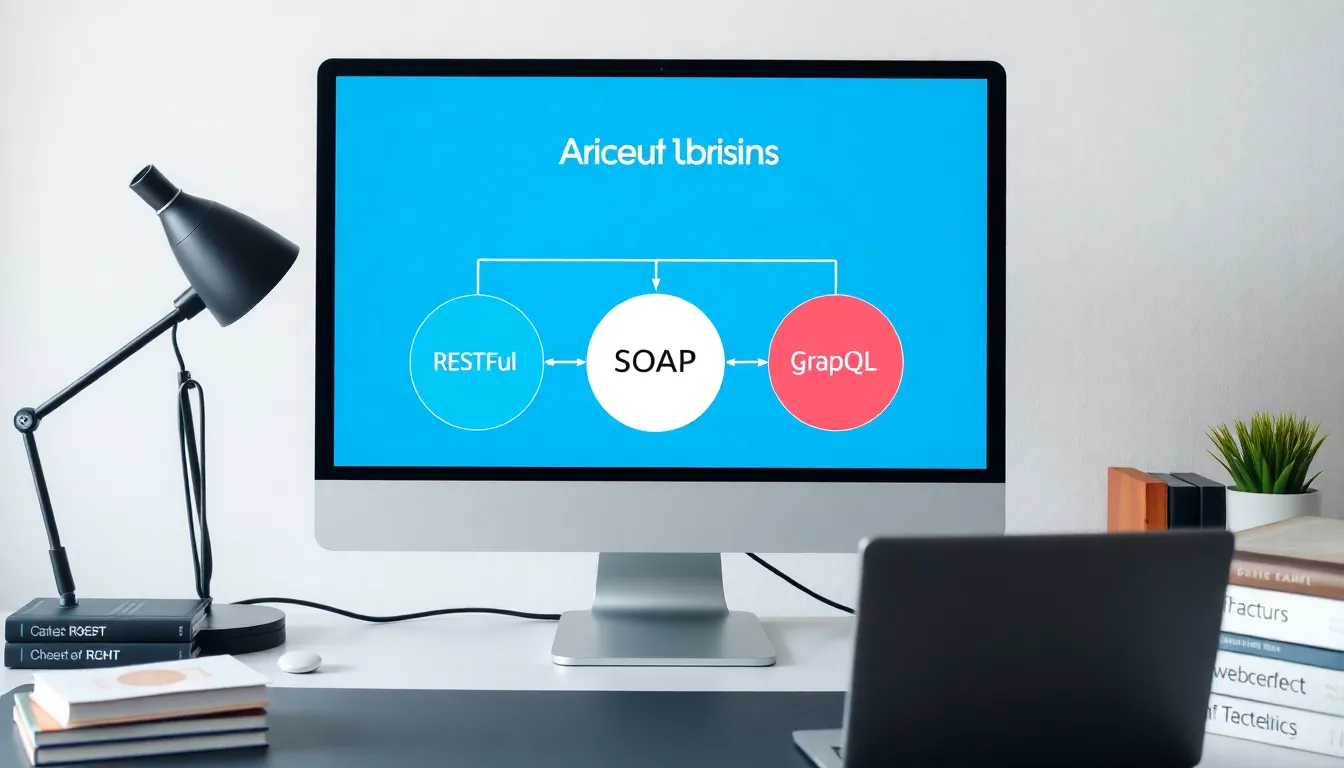In a world where apps are like teenagers—constantly changing and needing to talk to each other—API connectors are the unsung heroes of digital communication. These nifty tools bridge the gaps between different software systems, making sure they play nice together. Imagine trying to get two stubborn friends to agree on a dinner spot; that’s what APIs do, but with data.
With the rise of automation and the endless quest for efficiency, understanding API connectors is crucial. They’re the secret sauce that can turn a chaotic tech stack into a well-oiled machine. Whether you’re a developer looking to streamline processes or a business owner wanting to boost productivity, grasping the power of API connectors can transform your digital landscape. So buckle up and get ready to dive into the world of seamless integration—because who doesn’t want their apps to get along?
Table of Contents
ToggleOverview of API Connectors
API connectors play a crucial role in enabling software systems to communicate effectively. They serve as bridges, translating requests and responses between different platforms. Through standardized protocols, they allow seamless data transfer, which enhances interoperability.
Developers utilize API connectors to connect applications and share data without extensive manual effort. Flexibility stands out, as connectors support various programming languages and frameworks. This adaptability means businesses can integrate services more efficiently, saving time and resources.
Many common use cases exist for API connectors. They streamline processes such as data synchronization, where information from one system updates another in real-time. In addition, they facilitate third-party integrations, allowing businesses to expand their functionality without extensive reprogramming.
Security remains a priority. API connectors often include authentication and encryption mechanisms, ensuring that data remains protected during transmission. These features help maintain compliance with industry regulations and build user trust.
The future of API connectors looks promising. As technology evolves, more advanced connectors emerge, making integrations even simpler. Automated connectors provide faster setups, reducing overall development time. As organizations increasingly rely on diverse software solutions, the importance of mastering API connectors continues to rise.
Businesses that harness the power of API connectors can unlock greater efficiency. Efforts toward integration lead to improved workflow and productivity. Ultimately, understanding and implementing these connectors is vital in today’s digital landscape, simplifying complex interactions within software ecosystems.
Types of API Connectors

Understanding the various types of API connectors helps developers choose the right solution for their integration needs. Each type offers specific functionalities and strengths.
RESTful API Connectors
RESTful API connectors utilize HTTP requests to manage data. These connectors follow a stateless architecture, allowing scalability and flexibility. Developers often favor them for their simplicity and efficiency. Common operations include creating, reading, updating, and deleting data using standard HTTP methods like GET, POST, PUT, and DELETE. Many modern applications and services employ RESTful APIs due to their ease of use with web standards.
SOAP API Connectors
SOAP API connectors operate using XML-based messaging protocols. They ensure high security and formal contracts through WSDL (Web Services Description Language). Developers appreciate SOAP for its ability to perform complex transactions. Although it can be more challenging to implement, the robust structure and built-in error handling provide reliability. Industries requiring rigorous security measures, such as finance and healthcare, often choose SOAP for its secure communication capabilities.
GraphQL API Connectors
GraphQL API connectors introduce a flexible alternative to traditional RESTful approaches. They allow clients to request specific data, minimizing over-fetching and under-fetching. Developers favor GraphQL for its efficiency in retrieving only the needed information. The format enhances the performance of applications, especially those dealing with diverse data sources. Using a single endpoint, GraphQL simplifies data management across various platforms.
Benefits of Using API Connectors
API connectors greatly enhance software integration, making it easier for systems to communicate. They enable seamless interactions between diverse applications and data sources, leading to improved efficiency.
Improved Data Integration
Data integration benefits significantly from API connectors. They facilitate real-time access to information across multiple platforms, eliminating silos. With standardized protocols, connectors convert data requests into understandable formats, ensuring smooth exchanges. Developers utilize these tools to synchronize data effortlessly, enabling applications to access the latest information. This streamlined approach not only enhances accuracy but also minimizes delays caused by manual data entry processes.
Enhanced Workflow Automation
Workflow automation sees substantial improvements with API connectors. They automate repetitive tasks, allowing teams to focus on higher-priority projects. Through automated data transfers, organizations reduce human error and save valuable time. Connectors link different applications, transforming workflows into cohesive systems. Increased efficiency follows, enabling quicker response times and improved service delivery. Businesses gain the ability to adapt swiftly to changing demands while maintaining operational fluidity.
Challenges in Implementing API Connectors
Implementing API connectors presents several challenges that developers must navigate.
Security Concerns
Security remains a top priority when integrating API connectors. Organizations face risks such as data breaches and unauthorized access to sensitive information. Implementing robust authentication methods and encryption protocols is crucial for protecting data during transmission. Regular security audits help identify vulnerabilities, ensuring compliance with industry regulations. Proper documentation of security practices fosters transparency, enabling developers to build secure integrations. Without stringent security measures, organizations expose themselves to significant financial and reputational damage.
Compatibility Issues
Compatibility poses significant challenges during API connector implementation. Variations in programming languages, data formats, and protocols can lead to integration difficulties. Ensuring that different systems can communicate effectively requires thorough testing and, sometimes, custom development. Developers must also consider versioning differences, which can result in conflicts between APIs. Adequate documentation aids in mitigating compatibility hurdles, as it provides guidance on integration best practices. Maintaining compatibility is essential for seamless data exchange and operational efficiency across various platforms.
Future Trends in API Connectors
The evolution of API connectors signals exciting trends shaping the future of technology. Innovations are emerging that will enhance integration effectiveness and security.
Rise of No-Code Solutions
No-code platforms are gaining traction, enabling users without extensive programming knowledge to create API connectors. Tools that simplify the integration process allow businesses to connect applications quickly and efficiently. Ease of use fosters greater collaboration among teams, as non-technical stakeholders can participate actively in integration tasks. Increased accessibility of these solutions promotes rapid deployment and workflow automation. Organizations can respond faster to market demands and operational challenges.
Increased Focus on Security
Enhancing security features in API connectors remains a top priority. Organizations face threats such as data breaches and unauthorized access, highlighting the need for robust protection measures. API connectors will increasingly incorporate advanced authentication methods and encryption protocols to safeguard sensitive information. Industry regulations drive the demand for compliance-focused solutions. Future developments will prioritize privacy and data integrity, ensuring secure transmission while maintaining functionality across platforms. Stronger security measures boost trust and confidence among users and clients alike.
API connectors are essential tools in today’s digital landscape. They bridge the gap between diverse software systems, enabling seamless communication and data transfer. As automation becomes crucial for business success, understanding and leveraging these connectors can significantly enhance productivity and operational efficiency.
With various types of API connectors available, developers can choose the right solution to meet their specific integration needs. The ongoing advancements in this field promise even greater capabilities, particularly in security and user-friendly solutions. Embracing these innovations not only simplifies complex interactions but also positions organizations to thrive in an ever-evolving technological environment.





